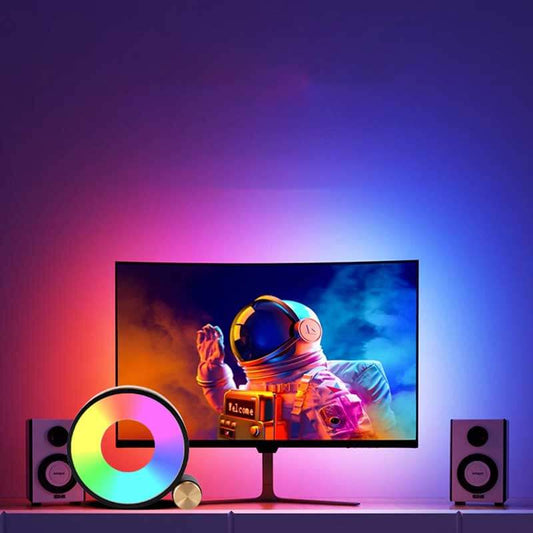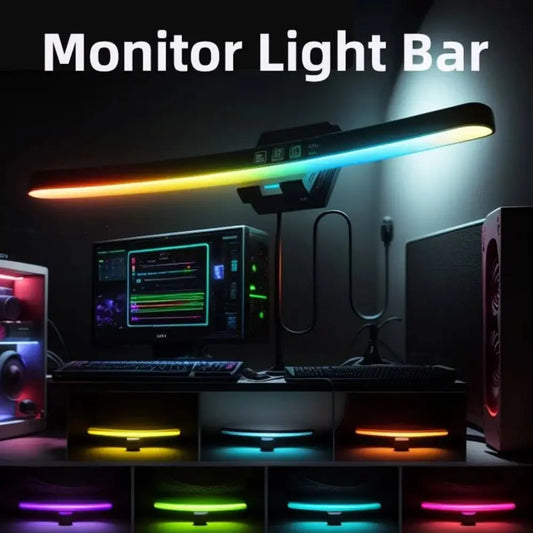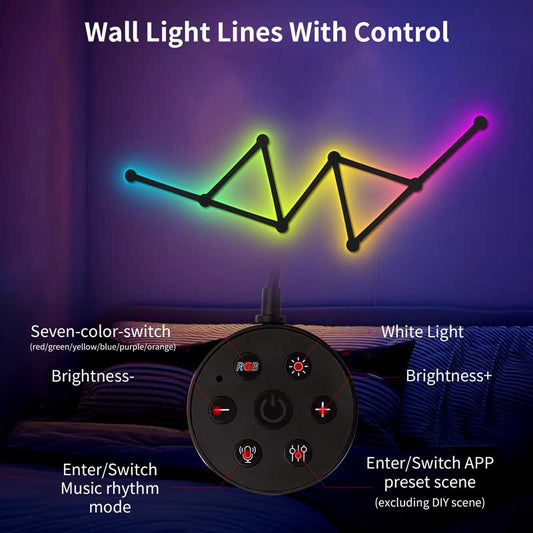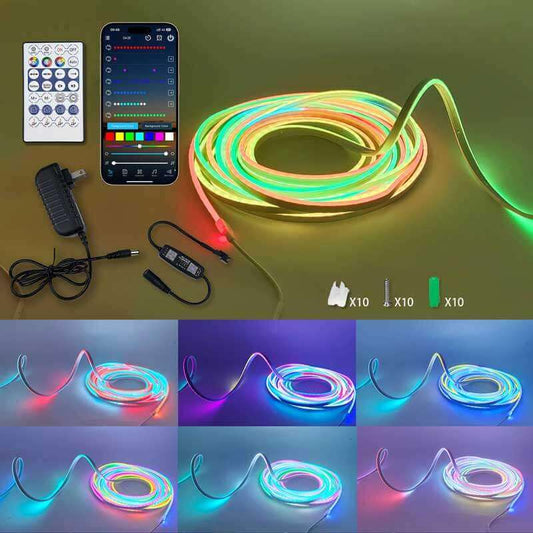Is OLED good for gaming?
Share
YOUWEI TTRAE: YES, OLED (Organic Light Emitting Diode) is excellent for gaming, especially if you prioritize picture quality, contrast, and color accuracy. OLED displays are widely regarded for offering some of the best visual performance available, which makes them a compelling option for gamers. However, like all technologies, OLED has both advantages and considerations that you should weigh depending on your gaming needs and budget.
Advantages of OLED for Gaming:
1. Perfect Black Levels and Contrast
- OLEDs can turn off individual pixels completely, achieving true black levels with no light bleed. This is a major advantage over LED-backlit LCDs, which rely on backlighting that can sometimes leak around the edges, especially in dark scenes.
- High contrast ratio: OLED displays have a near-infinite contrast ratio, which makes the dark areas of a game appear much deeper and more realistic. This is especially important for games with dark or atmospheric environments.
2. Vivid Colors
- OLED displays offer incredible color accuracy and wide color gamuts, with vibrant hues and rich saturation. This can be a huge benefit in visually stunning games that rely on detailed and vivid graphics.
- HDR (High Dynamic Range) performance is also superior on OLEDs, with the ability to show brighter highlights while retaining detail in dark areas, making the gaming experience more immersive.
3. Faster Response Times
- OLED panels have extremely fast response times (close to 0.1ms), meaning they can display fast-moving images (such as those in action-packed games) with almost no motion blur. This is a huge benefit for competitive gamers in fast-paced genres like first-person shooters (FPS) or racing games, where every millisecond counts.
4. Wide Viewing Angles
- OLED displays maintain consistent color and brightness even at wide viewing angles (up to 180°). This means you can enjoy the same high-quality gaming experience from different positions, which is great for multiplayer gaming or playing in a shared space.
5. Thin and Sleek Design
- OLEDs are incredibly thin compared to other display technologies, as they don’t require a backlight. This makes them an aesthetically pleasing choice if you're building a sleek and modern gaming setup.
6. Immersive Picture Quality
- OLED's superior contrast and color vibrancy create a more immersive, cinematic experience, especially in games with high-quality textures, dynamic lighting, and dark scenes. The ability to see deep blacks and bright highlights simultaneously is fantastic for games that use a lot of dynamic lighting effects.
Considerations When Choosing OLED for Gaming:
1. Risk of Burn-In
- Burn-in (or image retention) is one of the most significant concerns with OLED displays. If static images, such as HUDs (heads-up displays), logos, or game menus, are displayed for long periods, they can leave permanent ghost images on the screen.
- This is less of an issue for casual or non-competitive gaming but could be a concern for gamers who play a lot of games with static elements on-screen, like strategy games, role-playing games (RPGs), or sports games.
- Newer OLED TVs and monitors have features like pixel shifting, screen savers, and automatic brightness limiting to reduce the risk of burn-in, but it’s still something to consider, especially if you plan to use the display for long gaming sessions with static elements.
2. Higher Price
- OLED displays are generally more expensive than their LED-backlit LCD counterparts, particularly larger-sized models. The price premium is due to the technology’s superior picture quality and advanced features.
- If you’re on a tight budget, OLED may not be the most cost-effective option for gaming, especially when there are great LED monitors available at a lower price point with similar performance in many cases.
3. Lower Brightness Compared to LED
- While OLEDs can achieve excellent contrast and deep blacks, they are not as bright as some high-end LED displays, particularly QLED models. This can be a concern if you play in a bright room or are using your display for HDR content in daylight.
- QLED and other LED-backlit technologies can get brighter, which may be better for some gamers who prioritize brighter visuals in well-lit environments.
4. Limited Size Options for Monitors
- While OLEDs are very common in TVs, the options for OLED gaming monitors are more limited, particularly in terms of size. Most OLED monitors are in the 27-inch to 32-inch range, and larger displays (like 40 inches or more) are typically OLED TVs, not monitors.
- If you want an OLED gaming monitor, make sure to choose one with a suitable screen size for your desk setup and a resolution that suits your hardware (such as 4K for consoles or 1440p/4K for high-end PCs).
5. Potential for Higher Input Lag (on TVs)
- If you’re opting for an OLED TV instead of a dedicated gaming monitor, you may encounter higher input lag. While OLED TVs are increasingly optimized for gaming, not all models are as responsive as gaming monitors that focus on low latency.
- Ensure the OLED TV you choose has a gaming mode that reduces input lag, and is capable of high refresh rates (120Hz or above) if you're playing fast-paced games.
Best OLED Options for Gaming:
-
LG OLED Displays (OLED TV or OLED Monitor):
- LG OLED TVs like the CX or C1 series are some of the best OLED TVs for gaming, offering 4K resolution, 120Hz refresh rate, G-Sync, FreeSync, and low input lag. They are compatible with the PS5 and Xbox Series X, making them excellent choices for console gaming.
- LG UltraGear OLED monitors (such as the 27GN950) are perfect for PC gamers, offering a smaller, more compact OLED option with fast refresh rates and low latency.
-
Sony A90J OLED TV:
- Sony's A90J OLED series is another great choice for gamers looking for an OLED TV with superb picture quality, 4K resolution, and features like 120Hz support and HDMI 2.1 compatibility.
-
Alienware 34" Curved OLED Monitor (AW3423DW):
- Alienware's OLED gaming monitor is a 34-inch ultrawide that offers 120Hz refresh rates, NVIDIA G-Sync, and superior color accuracy. This is one of the best gaming monitors available for those who want an immersive gaming experience with OLED's contrast and vibrancy.
ALL IN ALL: Is OLED Good for Gaming?
- Yes, OLED is fantastic for gaming, especially for gamers who prioritize picture quality, contrast, and color accuracy. It offers superior image quality and fast response times, making it ideal for both casual and competitive gaming. It’s especially great for cinematic or single-player games with high visual fidelity.
- However, OLED does come with some trade-offs, such as burn-in risk and higher prices, so it may not be the best choice for all gamers, especially if you're concerned about static elements or you're on a budget.
- If you want the best possible visuals and are willing to invest in it, OLED is an incredible choice. For competitive gamers or those who want great value for money, a high-quality LED-backlit LCD (such as IPS or QLED) may be a more practical and affordable solution.




